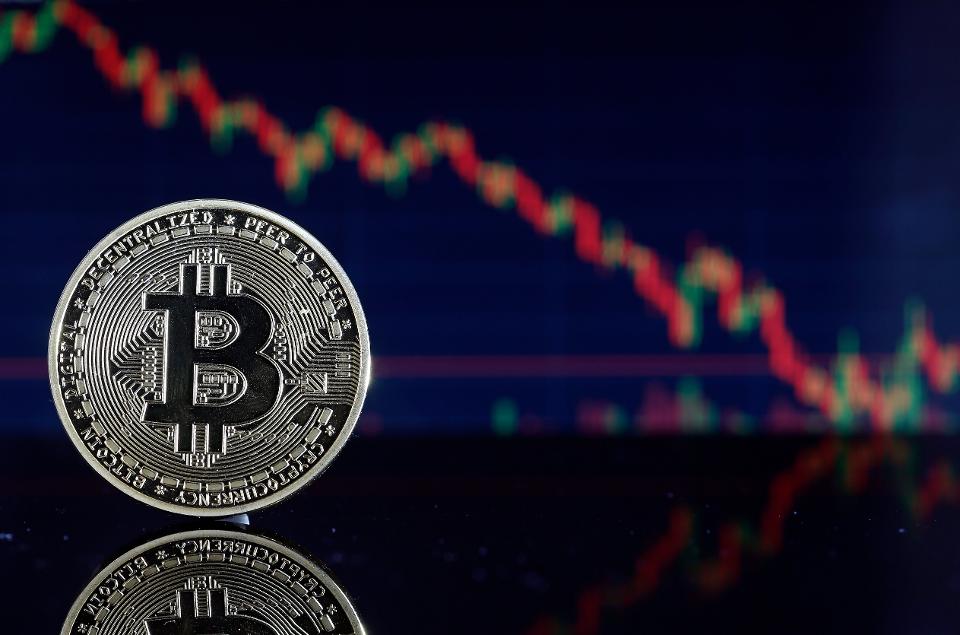Macroeconomic Data Could Thwart Bitcoin’s Surge, Analyst Warns
29.10.2024 18:30 1 min. read Alexander Stefanov
Renowned crypto expert Benjamin Cowen has issued a cautionary note regarding Bitcoin's potential breakout above the $70,000 mark, suggesting that a key macroeconomic indicator could influence its trajectory.
According to Cowen, Bitcoin’s response around this psychological level will be crucial in determining whether it adheres to historical patterns or follows the recent monetary policy outlook. He highlighted that while Bitcoin typically sees gains during the fourth quarter of a halving year, macroeconomic factors could delay any significant rally.
Cowen stated, there are two prevailing views on Bitcoin’s future: the cyclical perspective, which predicts a rise in Q4 2024, and the monetary policy perspective, suggesting a downturn followed by recovery in early 2025.
He explained that if Bitcoin surpasses $70,000 in a sustained manner, it will likely support the cyclical outlook. Conversely, a failure to hold this level could push Bitcoin back toward $64,000, reinforcing the monetary policy view and delaying any breakout until next year.
The upcoming US labor market report, scheduled for release on November 1st, is anticipated to play a significant role in Bitcoin’s short-term direction. Cowen noted that the market is closely monitoring unemployment trends, as a rise in the unemployment rate could create bearish conditions for Bitcoin.
Cowen warned that disappointing labor market data might lead to another sharp decline for Bitcoin, reminiscent of earlier this year when the cryptocurrency experienced significant pullbacks in April and August.
-
1
Vanguard Now Owns 8% of Michael Saylor’s Strategy, Despite Calling BTC ‘Worthless’
15.07.2025 17:09 2 min. read -
2
Standard Chartered Becomes First Global Bank to Launch Bitcoin and Ethereum Spot Trading
15.07.2025 11:00 1 min. read -
3
Bitcoin Reaches New All-Time High Above $116,000
11.07.2025 7:56 1 min. read -
4
What’s The Real Reason Behind Bitcoin’s Surge? Analyst Company Explains
12.07.2025 12:00 2 min. read -
5
Canadian Bank Sees Bitcoin Hitting $155,000 by 2025
15.07.2025 10:00 1 min. read
Ethereum Spot ETFs Dwarf Bitcoin with $1.85B Inflows: Utility Season in Full Swing
Ethereum is rapidly emerging as the institutional favorite, with new ETF inflow data suggesting a seismic shift in investor focus away from Bitcoin.
Ethereum Flashes Golden Cross Against Bitcoin: Will History Repeat?
Ethereum (ETH) has just triggered a golden cross against Bitcoin (BTC)—a technical pattern that has historically preceded massive altcoin rallies.
Bitcoin Banana Chart Gains Traction as Peter Brandt Revisits Parabolic Trend
Veteran trader Peter Brandt has reignited discussion around Bitcoin’s long-term parabolic trajectory by sharing an updated version of what he now calls the “Bitcoin Banana.”
Global Money Flow Rising: Bitcoin Price Mirrors Every Move
Bitcoin is once again mirroring global liquidity trends—and that could have major implications in the days ahead.
-
1
Vanguard Now Owns 8% of Michael Saylor’s Strategy, Despite Calling BTC ‘Worthless’
15.07.2025 17:09 2 min. read -
2
Standard Chartered Becomes First Global Bank to Launch Bitcoin and Ethereum Spot Trading
15.07.2025 11:00 1 min. read -
3
Bitcoin Reaches New All-Time High Above $116,000
11.07.2025 7:56 1 min. read -
4
What’s The Real Reason Behind Bitcoin’s Surge? Analyst Company Explains
12.07.2025 12:00 2 min. read -
5
Canadian Bank Sees Bitcoin Hitting $155,000 by 2025
15.07.2025 10:00 1 min. read


